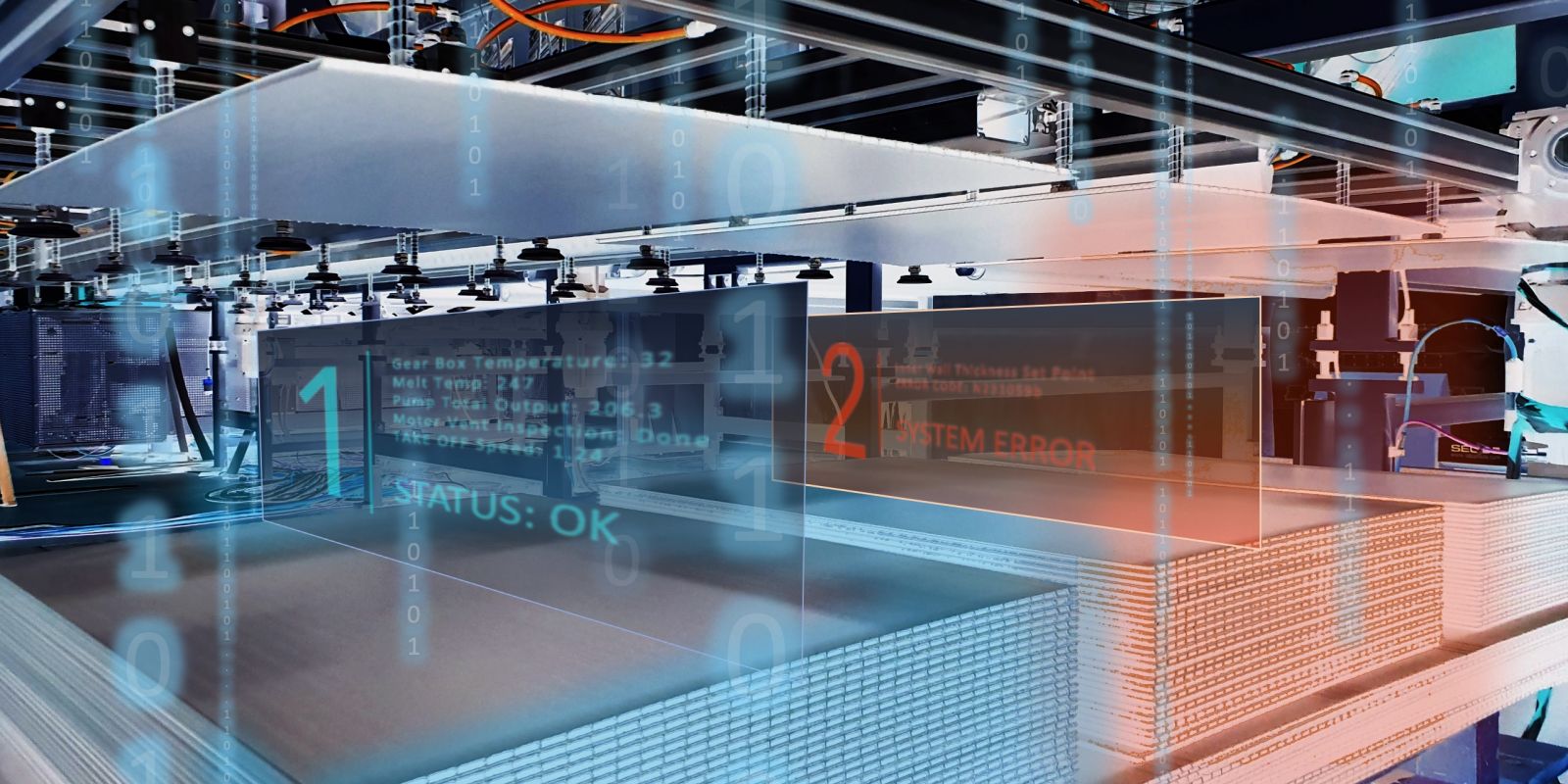CASE STUDY

Inaventa Solar and IFE develop a digital twin to optimize the production of solar collectors
- digital twin will make the production process more cost-effective and sustainable
Inaventa Solar is now in the process of completing a new production line for solar collectors based on high performance polymers (HPP) at our factory at Jevnaker, 70 km north of Oslo. The solar collectors are lightweight, can be produced in any length, and are specifically designed for aesthetic building integration. Making solar collectors in high-performing polymer materials, however, places great demands on both production equipment and control systems, and we are dependent on continuous process optimization and a high degree of digitization. Introducing a digital twin - ie, a virtual copy of the entire production line - will be the next step in our digitization process, enabling real-time prediction, optimization and improved decision-making. The digital twin will be connected to the production line's own control system and ensure an even more cost-effective and sustainable solar collector production process.
Inaventa Solar has been granted funding from the Research Council of Norway to develop the digital twin. The Institute for Energy Technology (IFE) will be our partner in this work. IFE are experts in industrial process modeling and have extensive experience with digital twin design.
Cutting-edge production techniques and modern sensor technology
The R&D project SUCCEED was established in February 2021 with the aim of developing methods for making volume production of high-tech polymer solar collectors more sustainable and cost-effective. The entire production process must be raised to an industrial level. Extrusion has been chosen as a processing method because it is suitable for volume production and facilitates the realization of the potential of our technology. That said, extrusion of HPP materials requires very sophisticated control and treatment conditions. Even small deviations in temperature or pressure lead to production issues such as slag deposition and incomplete crystallization, which in turn results in a high rejection rate.
In the SUCCEED project, we focus on understanding, modeling and verifying critical parameters at all production stages and on finding the optimization opportunities that digitization and the use of modern sensor technology provide. IFE is our partner in the project and will help us streamline monitoring and control of the entire production line, so that the products always meet our high quality requirements. To achieve this, IFE will develop a real-time digital twin and integrate this into the control system of the extrusion line. Although the digital twin itself will be built on known technologies in the very research front, the way in which it will be applied to control the extrusion process will be completely new.
The digital twin will help to minimize the two major issues of slag deposition and incomplete crystallization. To avoid slag deposition, accurate control of the processing temperature(s) and extrusion speed is needed. To reach optimal crystallization, the dimensions, configuration and temperature control of the calibrator and annealing unit must be fine-tuned.
Better control strategies and deeper insight into the production process
IFE will build a tailor-made model of Inaventa Solar´s HPP extrusion process and implement it as a digital twin. The digital twin is being developed by combining sensors, data processing algorithms and physics-based simulations. It will give us deeper insight into the production process, as we will be able to obtain information about the process even in stages where it is not possible to make measurements. This in turn facilitates sophisticated control strategies.
The main challenge for the digital twin will be to achieve the required accuracy within the time interval provided by the manufacturing process. Key indicators of the digital twin’s performance are reduced rejection rates, improved processing times, reduced need for manual intervention and lower energy usage during production.
Higher product quality, reduced material consumption and a better end-user price
The potential for improvement by integrating a digital twin into the production line is significant. Calculations show that if we succeed in pushing down the rejection rate to almost zero, the total production cost will be reduced by over 30%. Optimal processing conditions and lower material consumption also mean that the solar collector will have an even smaller environmental footprint, and that it can be offered at a lower end-user price.
Read more:
- Research council of Norway:
https://www.forskningsradet.no/nyheter/2021/411-millioner-kroner-til-innovasjon-i-bedrifter/ - IFE/ Institute for Energy Technology:
https://ife.no/en/
07 21


